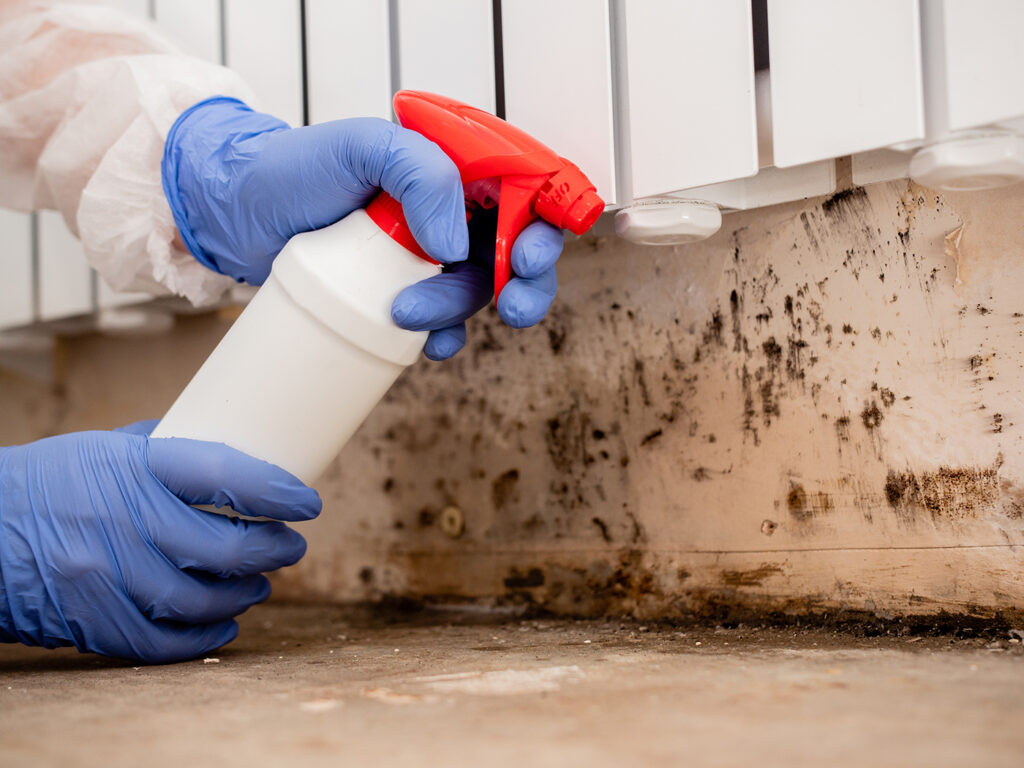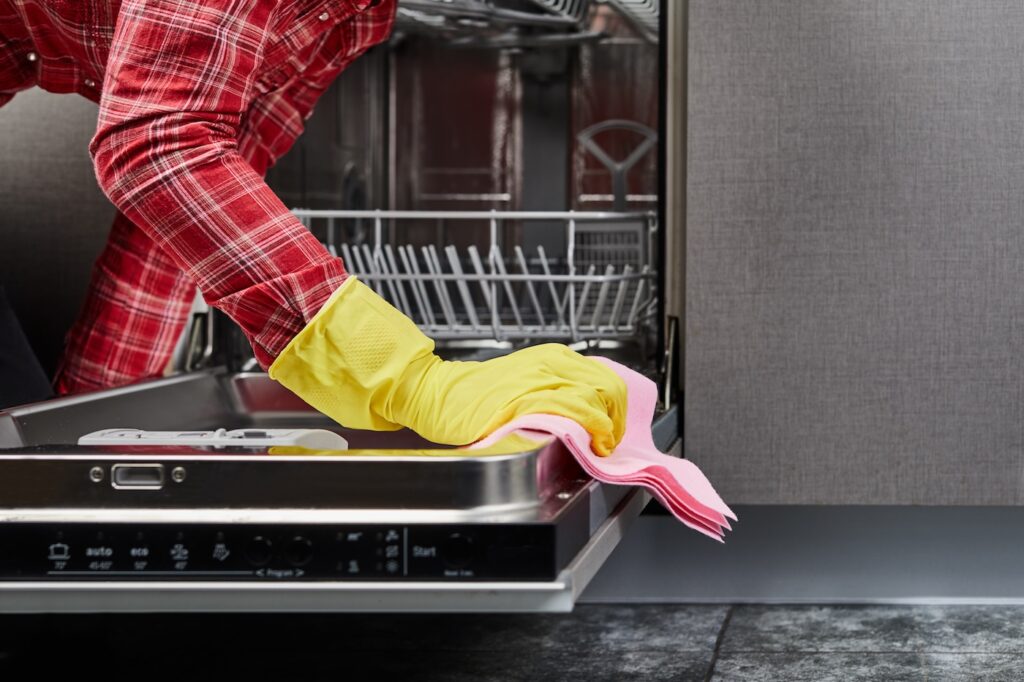You don’t have to be a clean freak to hate having mold. Nobody likes dealing with mold, and for good reason—it’s not just unsightly but also harmful to your health. The porous nature of wood makes it particularly susceptible to mold growth, as wood can readily absorb water. Given that mold spores are constantly present in the air, damp wood can often lead to a mold infestation. The key is to address the issue promptly once you notice it. Fortunately, removing mold from wood is a manageable task. In this article, you’ll learn how to effectively eliminate mold and restore your wood surfaces.
Project Overview
Getting started is straightforward. Expect the total time of the project to take three hours, with an intermediate skill level and a mere $0-15 in supplies. Note that the safe removal of mold on wood is critical so spores don’t spread on other surfaces through the air. This precaution is particularly important to avoid triggering allergies or respiratory issues for both yourself and others in your home. Follow the below steps for more on removing mold from wood.
Things to Consider Before Mold Removal
First and foremost, identify the source of the mold growth, whether it stems from a leaky pipe, water damage, or excessive moisture, and address the underlying issue. Next, make sure you are properly equipped with safety gear, including gloves, safety goggles, and a face mask or respirator. Finally, if at all possible, clean the wood outdoors. Fresh air increases ventilation to reduce risks associated with cleaning mold. If you can’t clean the wood outdoors, consider turning a fan on to keep airborne spores away from you.
How to Get Rid of Mold
Now that you’re prepared, follow the steps below to remove mold from wood or wood furniture.
1. Use Protective Gear

Make sure you’re wearing old clothing for the job as well as a mask that covers your nose and mouth along with gloves and safety goggles.
2. Vacuum the Area

Next, vacuum the area with a vacuum that has a HEPA filter to suck up any loose mold spores. HEPA filters can trap particles as small as 0.3 microns, with an efficiency of up to 99.97%. Run the vacuum over the affected area and take the vacuum outdoors to dispose of its contents. When you empty the vacuum, make sure the vacuumed material is tightly sealed in a plastic bag before tossing in the garbage so no spores can escape.
3. Clean Off the Mold

The first way to try to clean mold is with a cleaning solution of dish soap and warm water. Simply add a teaspoon of soap to a spray bottle with warm water and shake to mix. Spray the moldy area and use a soft-bristled brush to scrub the mold, sponging up excess liquid as you clean. Dry the surface completely with a towel.
If that doesn’t work, up the ante with distilled white vinegar. Vinegar is an effective mold treatment that kills more than 80% of mold species. Combine equal parts vinegar with warm water in a spray bottle and spritz the solution onto the mold stains. Let the solution sit for one hour, then wipe the surface with a moist cloth, followed by a dry towel.
If the mold persists, it’s time to bring out another option for what kills mold: borax, a safer alternative to bleach. Combine one tablespoon of borax with a cup of water and apply the solution to the mold using a soft-bristled brush. Thoroughly scrub away the mold, leaving the borax solution on the wood. Resist the urge to sponge up excess liquid, aiming to retain as much solution in the wood as possible to deter future growth. Run a fan or dehumidifier in the room to make sure the surface dries completely with the borax still under the surface.
It’s important to note that while bleach or a bleach solution is a highly effective way to kill mold, it should be avoided on wood surfaces, especially if they are sealed. This is because the chlorine in bleach cannot penetrate wood; only the water portion of the bleach is absorbed. The chlorine part of bleach is what kills mold. Although mold may seem eradicated, it is likely to persist and resurface in a few months if treated with bleach.
4. Sand Wood If Necessary

If the previous steps fail to resolve the issue, you have one last tool in your arsenal: sanding. Use 100-grit sandpaper to rub the affected portion, while trying not to sand away too much of the surrounding areas. Follow up by repeating step two, vacuuming the area with a HEPA filter to eliminate dust and any loosened spores.
Mold Removal FAQs

What’s the Difference Between Mildew and Mold?
Mildew is the most common type of mold found in homes. Mildew grows in warm, damp places like basements, laundry rooms, and shaded porches. Initially appearing as gray or white, mildew eventually transforms into black or brown. To determine whether a stain on wood is mildew or dirt, apply a cotton swab dipped in bleach to the stain. If the stain lightens or disappears within a couple of minutes, it’s likely mildew. If no change occurs, it’s probably dirt.
Can Wood Be Saved From Mold?
Yes, wood can be saved from mold. When it’s time for a deep clean, taking prompt and effective action can salvage the wood and prevent further mold growth. Follow the steps outlined in this guide for thorough mold clean up, and remember, the key is early intervention. By addressing the issue promptly, you can avoid a serious mold problem.
How to Prevent Mold Forming on Wood?
To prevent mold, immediately address any leaks in your home. If you can dry the area within a day or two, mold likely won’t grow. Additionally, minimize moisture and humidity by maintaining well-functioning gutters and a sound roof. Also make sure that the ground slopes away from your home’s foundation. Finally, verify that appliances are venting properly, and use exhaust fans and dehumidifiers as needed.
What Kills Black Mold on Wood?
Not all black mold is the dangerous variety. Stachybotrys chartarum, commonly known as black mold, is a greenish-black mold that thrives on wood, paper, and cotton. It produces toxins that can impact health, causing symptoms such as coughing, wheezing, and eye irritation. Dealing with this type of black mold is best left to professionals. However, if you notice mildew that has taken on a black hue, you can remove it by creating a mold treatment mixture of water and dish soap in a spray bottle and scrubbing the affected area. Wear safety goggles, rubber gloves, and a mask to minimize exposure.
Can Mold Affect the Structural Integrity of Wood?
Yes, some mold can affect the structural integrity of wood. This mold is typically visibly fuzzy or slimy black or green mold and the drywall or wood underneath will be soft or crumble to the touch. This indicates irreversible rot and the damaged areas must be removed and replaced immediately.
Hire a Tasker to Do the Job
Cleaning wood is certainly a manageable task, but if you have a compromised immune system or prefer not to take any risks, consider seeking a Deep Cleaning Tasker on Taskrabbit. It’s recommended if the mold area is larger than 10 square feet, it’s best to leave it to someone with experience. In cases like post-hurricane, you might not be left with another choice. Booking a Tasker is as simple as ordering a pizza; effortlessly compare rates and reviews for dozens of Taskers on one user-friendly platform. Enjoy the benefits of a clean space that maximizes productivity, and you can even get some help with organization while you’re at it.














